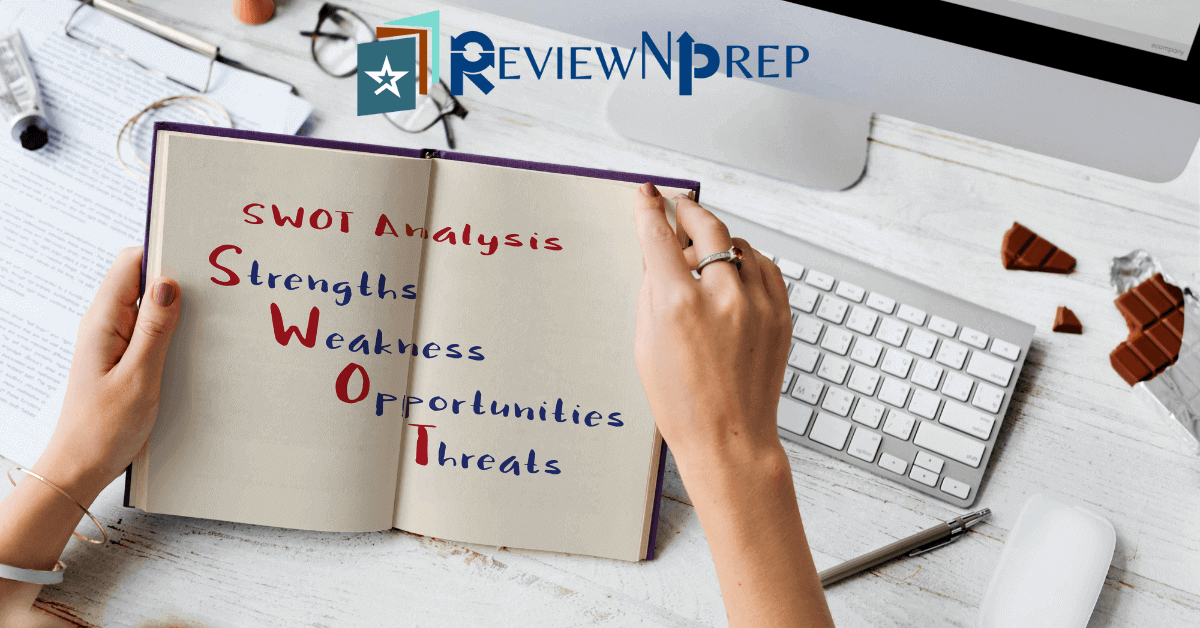|
|
A SWOT analysis is a strategic planning tool that helps organizations and individuals identify the internal and external factors that may impact the success of a project. SWOT stands for Strengths, Weaknesses, Opportunities, and Threats. By conducting a SWOT analysis, you can gain a better understanding of the potential challenges and opportunities that may arise during the course of a project, and you can use this information to make informed decisions about how to manage those challenges and take advantage of opportunities as they arise.
Definitions of SWOT
Here is a more detailed explanation of each element of a SWOT analysis and how it can help a project avoid overspending
Strengths

Strengths are the positive internal factors that give your project an advantage over others. By identifying the strengths of your project team, you can leverage those strengths to find ways to complete the project more efficiently and effectively. This can help you avoid the need to spend additional money on external resources or contractors. For example, if your team has strong project management skills, you may be able to complete the project on time and within budget without the need to hire additional project management consultants.
Weaknesses

Weaknesses are the negative internal factors that may hinder the success of your project. By identifying the weaknesses of your project team, you can take steps to address those weaknesses and improve the overall performance of the team. This can help you avoid the need to spend additional money on training or other resources to help the team perform better. For example, if your team lacks technical expertise in a particular area, you may be able to save money by providing training to your team rather than hiring external consultants to complete that work.
Opportunities

Opportunities are external factors that may present themselves during the course of the project and that you can take advantage of to save money or generate additional revenue. By identifying these external opportunities that may arise during the course of the project, you can take advantage of those opportunities to save money or generate additional revenue. For example, if you identify an opportunity to negotiate a better price with a supplier, you may be able to save money on materials or other resources.
Threats

Threats are external factors that may pose a potential risk to the success of your project. By identifying potential threats that may arise during the course of the project, you can take steps to mitigate those threats and avoid potential cost overruns. For example,
if you identify a potential supply chain disruption, you can take steps to secure alternative sources of materials to avoid delays and additional costs.
SWOT Analysis Matrix Template
Below is a representation of a SWOT analysis template, the matrix is typically arranged in a grid with four quadrants, each representing one of the elements identifying the internal and external factors that may impact the success of a project

How to Conduct a SWOT?
Conducting a SWOT analysis is a relatively simple process, and it can be done at any stage of a project. To conduct a SWOT analysis, you will need to:
Gather information

Start by gathering information about your project, including the goals, objectives, and scope of the project. You will also need to gather information about the internal and external factors that may impact the success of the project.
Identify strengths
Look for the positive internal factors that give your project an advantage over others. These could include things like strong project management skills, a dedicated team, or access to valuable resources.
Identify weaknesses
Look for the negative internal factors that may hinder the success.
Identify opportunities
Look for external factors that may present themselves during the course of the project and that you can take advantage of to save money or generate additional revenue. These could include things like the availability of new technologies or the opportunity to negotiate better prices with suppliers.
Identify threats
Look for external factors that may pose a risk to the success of your project. These could include things like regulatory changes, economic downturns, or supply chain disruptions.
Analyze the information

Once you have identified the strengths, weaknesses, opportunities, and threats, it’s time to analyze the information and determine how each of these factors may impact your project. Consider how each of these factors could affect your project, and think about what steps you can take to address them.
Develop a plan

Based on your analysis, develop a plan to address the strengths, weaknesses, opportunities, and threats that you have identified. This plan should include specific actions that you can take to manage these factors and avoid potential cost overruns.
Implement the plan

Put your plan into action and track your progress as you move forward with your project. Regularly review your plan and make adjustments as needed to ensure that you are staying on track and avoiding potential cost overruns.
By conducting a SWOT analysis and developing a plan to address the strengths, weaknesses, opportunities, and threats that you have identified, you can increase the chances of success for your project and avoid overspending. SWOT analysis can give you a competitive advantage in a rapidly changing environment. However, the business strategies derived from SWOT analysis works only if they are realistic action plans.
It’s important to note that a SWOT analysis is just one powerful tool that you can use to manage a project and avoid potential cost overruns. Other tools and techniques that may be helpful include project management software, risk management strategies, and regular project status reviews. By using a combination of these tools and techniques, you can increase the chances of success for your project and avoid overspending.
Image Credit: Image by rawpixel.com on Freepik
Author: Vimal is a certified PMP and a seasoned Project Manager. Connect with him on LinkedIn.
Further Reading
Guide on how to become successful as a project manager or if you are in a leadership role.

